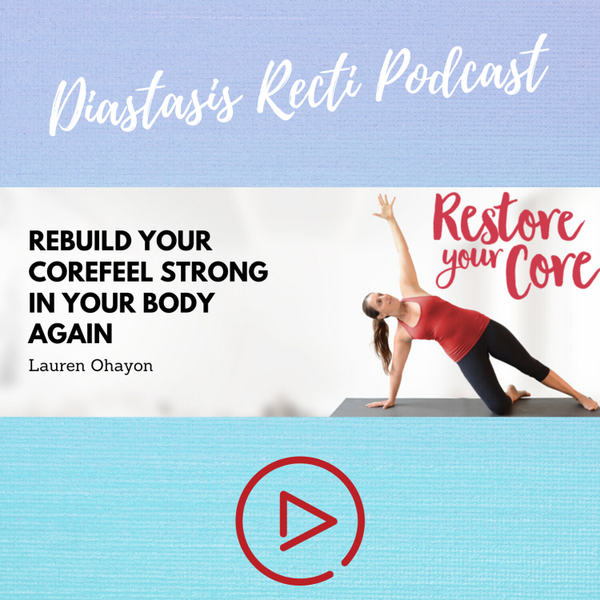
Postpartum Pelvic Floor Pain
- S1E30
- 02:49
- February 19th 2021
Post-pregnancy pain, whether it be pelvic floor pain or joint pain, is a shared experience among many postpartum people. However, postpartum pain, especially in pelvic pain, can vary in frequency, length, and intensity. Some people may only experience short-term pain that lasts the first 4 – 8 weeks of their recovery and others may suffer from pelvic pain for up to or over a year after they’ve given birth.
Pelvic organ prolapse and other forms of pelvic floor dysfunction are very common among postpartum people. Symptoms can vary in duration and severity, but many women are likely to experience a variety of symptoms during and after their pregnancy. At Restore Your Core, we’ve noticed similarities in many of our client’s stories. Some of the most common pelvic floor complications our clients experience include:
- Urinary incontinence
- Fecal incontinence
- Pain during intercourse
- Vaginal pain
- Rectal pain
- Low back pain
- Pelvic pain
- Diastasis Recti – separation of the abdominal muscles
- Pelvic organ prolapse
- Pubic bone pain
- Pelvic girdle pain
Pelvic floor pain can be treated and relieved in many ways. Whether you visit a pelvic floor physical therapist or take part in a program like Restore Your Core, movement specialist or your physical therapists will utilize exercise methods designed to strengthen and restore function to your core, pelvic floor muscles, and relieve any painful symptoms you may be experiencing.
In this article I will attempt to address the most commonly asked questions regarding pelvic pain after giving birth.
How Long Does it Take for Your Pelvic Floor to Recover After Childbirth?
After giving birth, your pelvic floor and core muscles will be in the process of healing for at least a year. Although many women may begin being active again after the first 8 weeks postpartum, often pelvic pain and the symptoms of diastasis recti may be experienced for months postpartum. Both your core and your pelvic region have gone through significant changes in order to accommodate your baby. Attempting to quickly get back into an exercise or workout routine may be unhelpful in your recovery – especially if you are already experiencing complications or painful symptoms.
Every postpartum person is different and the recovery length can change depending on many factors. Healing can take anywhere from a few months to over a year, depending on whether or not there are underlying conditions which may be increasing the pain. While there are no overnight success stories, there are many many success stories of people like you who have healed their pelvic organ prolapse by taking these steps slowly and surely.
However, there are many things you can begin doing now to help begin the healing process. Here is a video summary covering some of the steps you can take to begin healing your pelvic floor.
Is it Normal for Your Pelvis to Hurt After Pregnancy?
Yes! Postpartum pelvic pain is very common. During childbirth, your ligaments and joints become loose as your body is adapting to your child’s weight, abdominal separation, and increased heaviness in your pelvic floor. It is common to experience pain in your pelvic girdle, hips, and joints as a result. Light recovery exercises and movement can also cause minimal pain as you begin strengthening your pelvic floor muscles. Seeing a pelvic floor physical therapist or enrolling in a yoga or postpartum exercise program can help relieve urinary incontinence, back pain, and other postpartum pelvic issues.
Restore Your Core: Diastasis Recti and Pelvic Floor Talks
The Restore Your Core podcast is all about health and fitness for those struggling with Diastasis Recti or Pelvic Floor issues.
Lauren Ohayon makes videos, runs a thriving facebook group, and creates blogs that help people to feel better and reclaim their healthy bodies.
https://restoreyourcore.com/learn/diastasis-recti/
If you're too busy to read the blog then feel free to listen to the podcast! We hope to be a part of your core restoration journey.